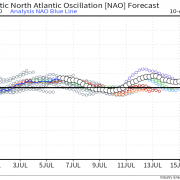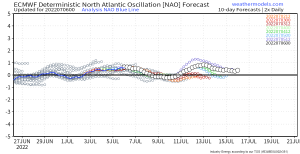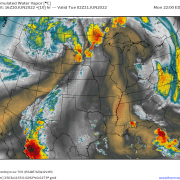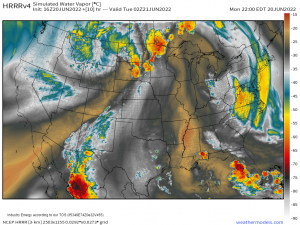
What is Evaporational Cooling?
Evaporational cooling is responsible for a variety of interesting and important weather phenomenon. How can the temperature suddenly drop 10 degrees just in time for a would-be-rainstorm to turn to snow? What does evaporation have to do with damaging wind gusts in thunderstorms?

Evaporation at work: the water in the coffee slowly evaporates into the air, leaving only the crushed up beans at the bottom of the cup.
Evaporation is a process that is fundamental to our world. Evaporation occurs when liquid water molecules change phase into their gaseous state, known as water vapor. Evaporation occurs all the time. Water evaporates off the surface of lakes, rivers, and oceans. Water evaporates off your car, your house, and your yard after a rainstorm. If you spill a glass of water on the table, eventually, it will all evaporate, leaving your table perfectly dry. So why is this process important to weather? The first and foremost reason is that all the water vapor in the atmosphere, every drop of rain, every flake of snow, every crystal of ice, all comes from evaporation. Without water vapor in the atmosphere, there would be no weather. While this is all important, I want to talk about the much less known impact of evaporation on our weather: evaporational cooling.
Evaporational cooling is defined simply as cooling of an airmass due to evaporation. But how can evaporation cool the atmosphere? For the answer to this question, we turn to chemistry. Any phase change a substance undergoes involves a transfer of energy. An obvious example of this is melting snow or ice. In order for snow or ice to melt, there needs to be an increase in energy, either from the sun or from your hand or from the inside of your car. Why is there an energy transfer during a phase change? This has to do with the behavior of molecules. Molecules of any substance that are in their solid state (like ice, for example) have much lower energy than molecules of the same substance in their liquid state (like liquid water) while molecules of a substance in their gaseous state (like water vapor) are incredibly energetic. In fact, one of the only things that determine what state a substance is in is the energy of its molecules, so in order for there to be a change in state, there needs to be a change in energy.

For water to change from a liquid to a gas, either through boiling or through evaporation, heat energy must be added.
In evaporation, the water molecules experience a positive change in energy. They go from their medium energy phase (liquid) to their high energy phase (gas). The energy required for this change doesn’t just come out of nowhere. It is taken from the atmosphere surrounding the water. As the energy from the atmosphere is transferred into the water molecules, the atmosphere loses energy. Because temperature is purely a reflection of how much energy there is in a particular thing (in this case, air molecules), the loss in energy is accompanied by a drop in temperature, thus resulting in cooling of the atmosphere due to evaporation.
So why is evaporational cooling important to understand? It has a wide variety of impacts on our weather. From damaging winds in thunderstorms to surprise snowfall, when the beginning of precipitation coincides with a rapid drop in temperature, wacky weather often follows close behind.
Now that you know how evaporational cooling works and why it’s important to our weather, be sure to check out the wide array of model data over at weather.us to see if evaporational cooling is in your forecast!
Feel free to send me an email if you have any questions about the weather you’d like me to explain! jack@weather.us
-Jack Sillin











